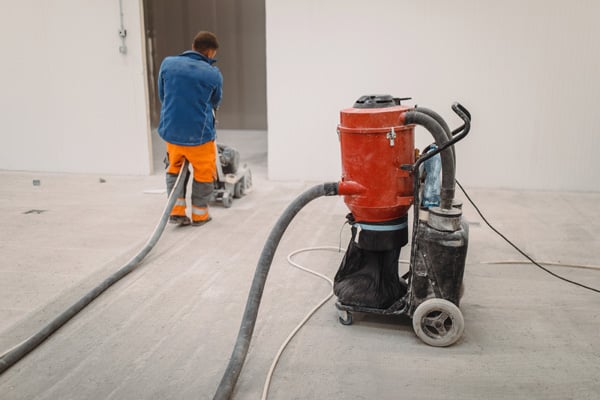Keith Rickabaugh 6 min read
Understanding Respirable Silica in Construction: Risks and Protection
Contributors
Keith Rickabaugh
Subscribe to our newsletter
Crystalline silica in the form of quartz, is one of the most abundant minerals on the surface of the earth. It is commonly found in construction materials such as concrete, brick, and stone.

Health Risks Associated with Silica Exposure
When workers cut, grind, drill, or crush these materials, there is a potential that particles containing crystalline silica can be released into the air. Some of these particles may be “respirable” in size meaning that they can penetrate into the deep regions of the lung. Long-term inhalation exposure to elevated levels of respirable crystalline silica dust can lead to serious health conditions.
- Silicosis: An irreversible lung disease that occurs when silica particles accumulate in the lungs. The immune system responds by sending white blood cells to the area, causing inflammation and scarring. The lungs’ ability to take in oxygen is reduced, leading to symptoms including coughing, shortness of breath, and fatigue. Silicosis is a progressive, debilitating disease that can be fatal.
- Lung Cancer: Over time, the scar tissue caused by silica results in the formation of lung nodules, which can mutate and become cancerous, causing lung cancer. Smokers who are exposed to silica face an even higher risk.
- Chronic Obstructive Pulmonary Disease (COPD): The accumulation of inhaled silica leads to scarring and stiffening of the lungs, reducing lung function and obstructing airflow, making it difficult to breath.
Sources of Silica Exposure in Construction
To protect workers and remain compliant with regulations, firms involved in construction, maintenance, and demolition should be aware of the sources of silica exposure.
- Cutting, Grinding, and Drilling: Activities like cutting concrete, grinding masonry, and drilling into rock can release fine silica particles into the air.

- Abrasive Blasting: Sandblasting or abrasive blasting to remove paint, rust, or surface coatings could generate airborne silica-containing dust.
- Demolition and Renovation: Breaking down old structures or renovating existing ones can release silica dust.
- Foundry Work: Foundries that produce metal castings often use silica-based sand molds. Workers involved in mold-making and casting may have an increased risk of airborne exposure to crystalline silica-containing dust.
Protective Measures for Construction Workers

OSHA standard 9 CFR 1926.1153 requires employers to limit worker exposure to respirable crystalline silica and take steps to protect workers. OSHA provides a list of acceptable control methods (Table 1) or an employer can measure workers’ exposure and decide on the appropriate dust control measures to implement. There are many ways to reduce exposure and protect workers, though a combination of methods is generally employed.
- Engineering Controls: To keep silica dust from becoming airborne, dust collection and water suppression systems are used during cutting, grinding, and drilling. These can be integrated into smaller tools with water lines or vacuum hoses or applied to large areas with sprinkler systems for dust suppression.
- Enclosures: Isolating work areas, such as an enclosed cab with air filtration on a skid steer, a walled room for a machine operator, or curtains between work zones could help to contain silica dust.

- Respiratory Protection: If engineering controls are not feasible, respiratory protection of workers who could potentially be exposed to silica dust above established exposure limits may be needed. If respirators are considered mandatory by the employer, workers should have access to NIOSH-approved respirators that protect against respirable dust. The employers ' OSHA-compliant respiratory protection program should cover respirator training, fit testing, medical clearance and appropriate use of respirators.
- Personal Hygiene: Workers should wash their hands and face thoroughly after working with silica-containing materials and consider possibly changing work clothes and showering before leaving the worksite.
By understanding the risks of respirable silica and implementing preventive measures, organizations can create safer worksites and protect the well-being of those who build our world. For over 40 years, RJ Lee Group experts have worked closely with builders and contractors to assess their risks to potentially harmful materials such as asbestos and crystalline silica. We offer a full range of testing and consulting services to help you comply with all applicable health and safety regulations.

